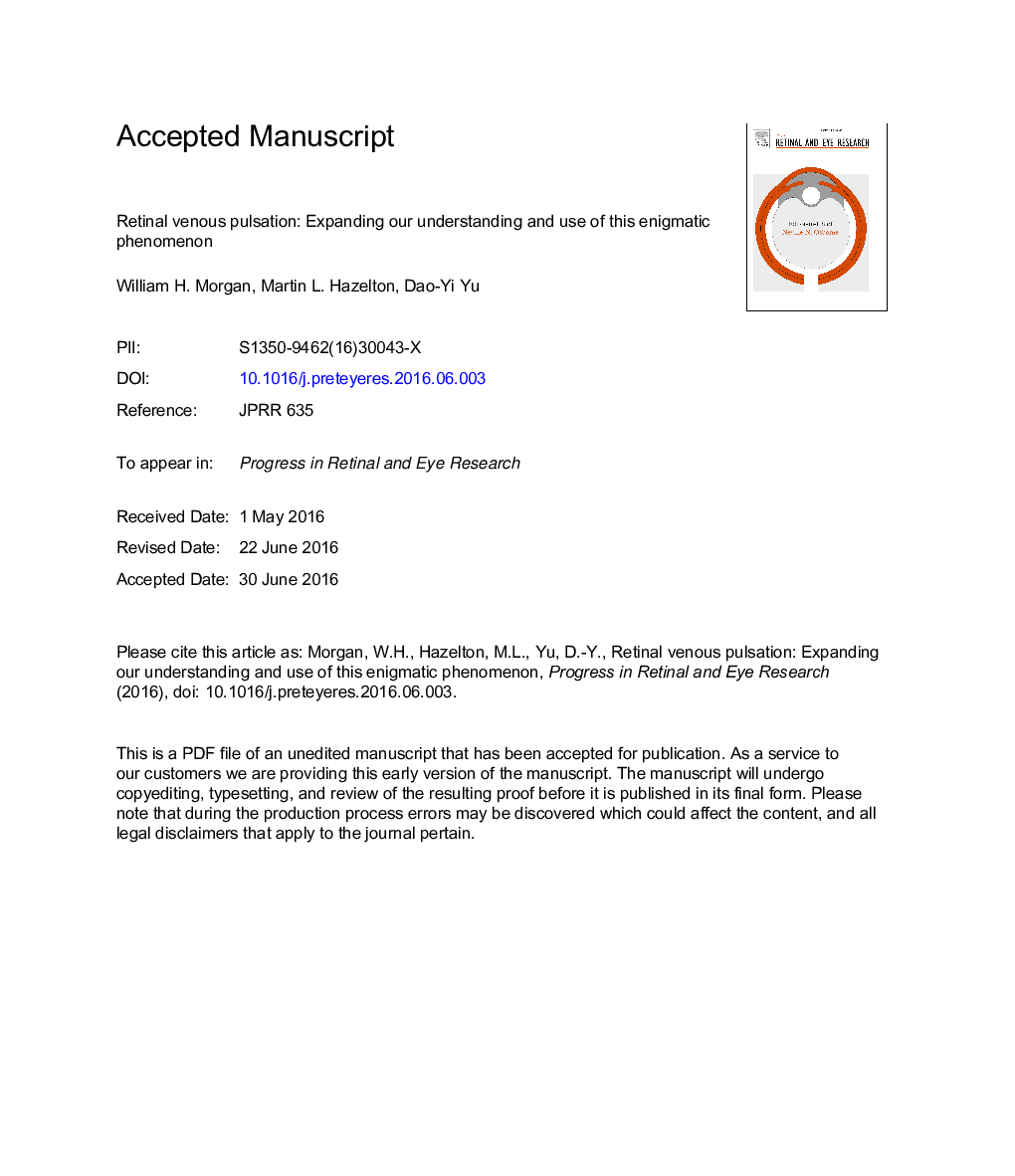| Article ID | Journal | Published Year | Pages | File Type |
|---|---|---|---|---|
| 5705666 | Progress in Retinal and Eye Research | 2016 | 51 Pages |
Abstract
Retinal vein pulsation was first noted soon after the invention of the ophthalmoscope 170 years ago and was seen to change with cerebrospinal fluid pressure (CSFP) variation in the 1920s. The classical explanation for vein pulsation was that the cardiac cycle induced systolic peak in intraocular pressure (IOP) tended to intermittently collapse the retinal vein close to its exit in the central optic disk, causing pulsation to be counter-phase to IOP. Recently, improved ophthalmodynamometry and video recording techniques have allowed us to explore the fundamentals of retinal vein pulsation. This demonstrates that retinal venous collapse is in phase with both IOP and CSFP diastole, indicating the dependence upon CSFP pulse. We describe in some detail the mathematical and physical models of Starling resistors and how their results can be applied to understand the physiology of retinal vein pulsation. We discuss various techniques for measuring retinal venous pulsation, including a novel modified photo-plethysmographic technique developed in our laboratory. With these techniques, non-invasive measurement of CSFP is beginning to look feasible. Venous pulsation properties also have significant prognostic value in predicting long-term outcomes for both glaucoma and central retinal vein occlusion, as well as utility in other retinal vasculopathies and orbital disease. We demonstrate the potential use of modified photo-plethysmographic images in assessing these various disorders. A revised understanding of retinal vein pulse wave transmission along with improved measurement techniques may generate useful clinical tools for assessing these disorders.
Related Topics
Life Sciences
Neuroscience
Sensory Systems
Authors
William H. Morgan, Martin L. Hazelton, Dao-Yi Yu,
